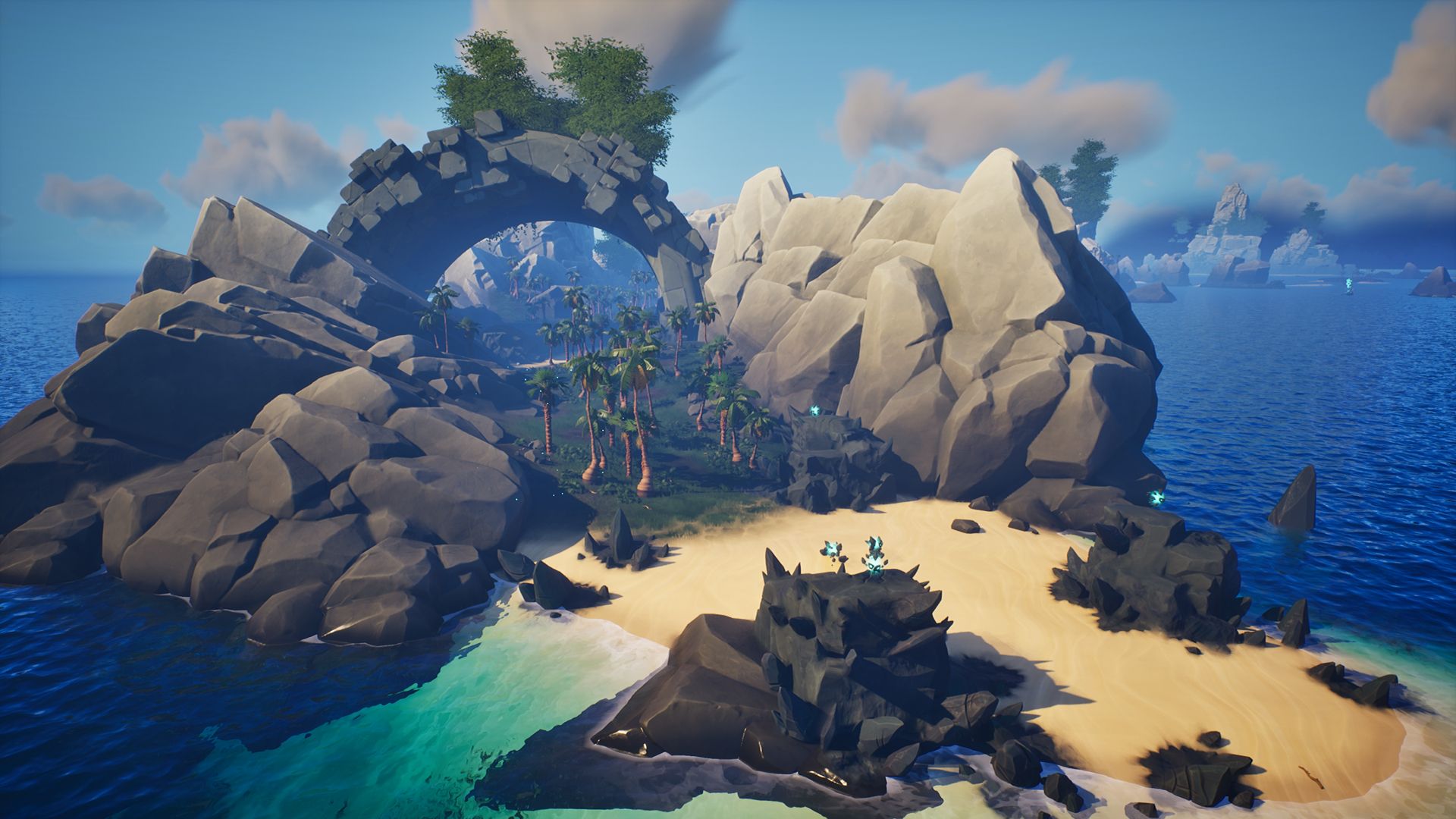
Voyagers of Nera, created by indie developer Treehouse Games, is a survival crafting game where you’re stranded in a huge ocean. You can play alone or with friends, building bases, gathering supplies, battling creatures, and exploring the sea to find new lands. This is Treehouse Games’ first game, and they’re aiming to make a significant impact on the survival crafting genre.
Game Rant recently interviewed Michael Chu, the CEO of Treehouse Games, to discuss the upcoming early access launch of Voyagers of Nera. Chu talked about the continued popularity of survival crafting games and highlighted the core features of his game. The following has been edited for readability and conciseness.
Voyagers of Nera is About Shared Experiences
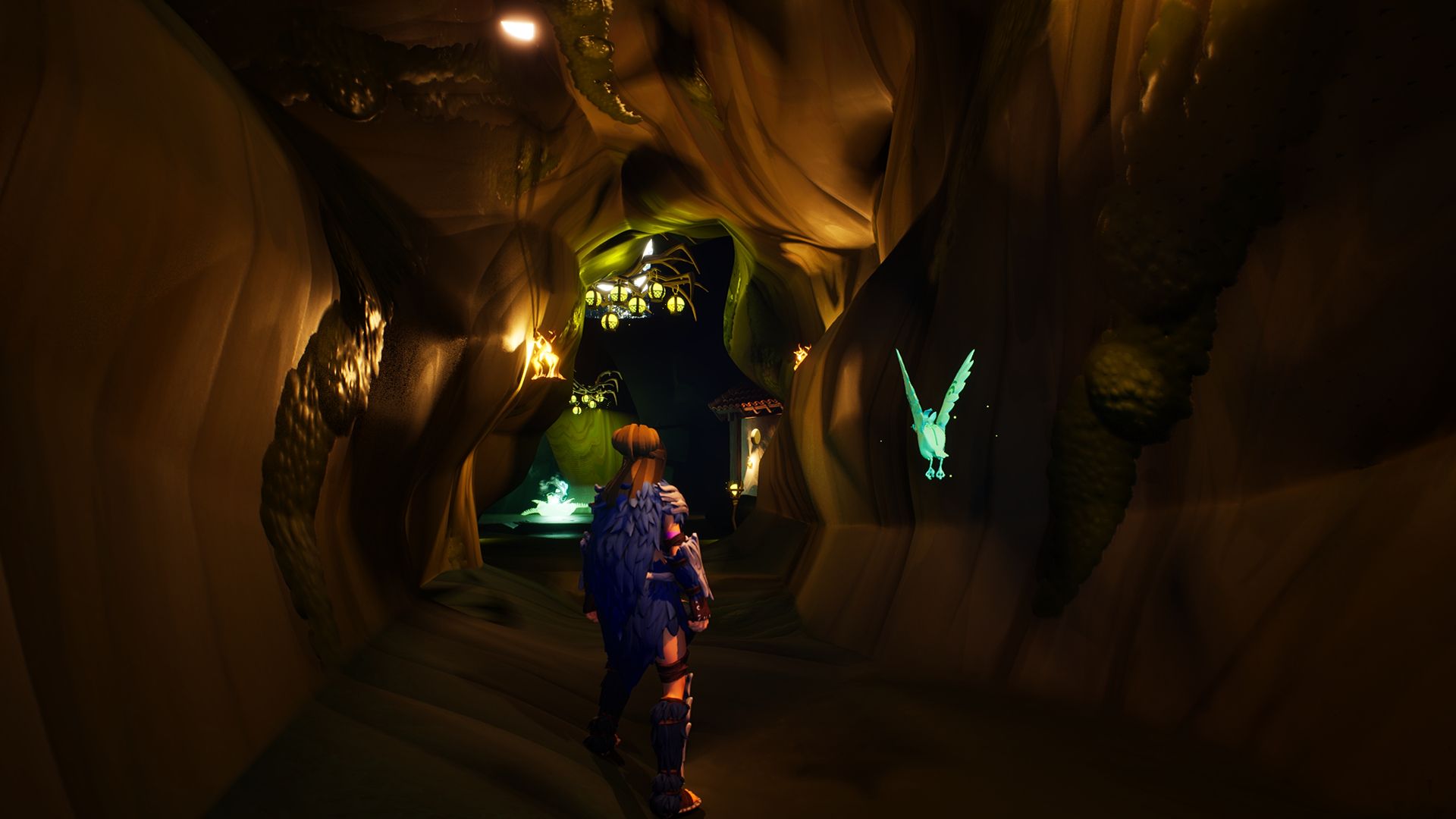
Game Rant: Could you talk a little bit about some of the inspirations behind Voyagers of Nera?
I dedicated seven years to intensely competitive games like League of Legends, working on many different aspects of the game. I also led the team that created Teamfight Tactics. After launch, we noticed a lot of players were leaving – players who primarily wanted a fun, social experience with their friends. Our biggest challenge became how to evolve the game to keep these players engaged, without making it feel overly stressful or like a high-stakes risk every time they played. We wanted to avoid a situation where mistakes would ruin the fun for everyone.
Starting my own studio felt incredibly inspiring, especially because I was doing it with a long-time friend – someone I’ve known since college. We originally bonded over making games as students, hoping to launch our careers, and games continued to be how we stayed connected. In fact, some of my closest friendships were built through gaming. Even with my older brother, who’s ten years my senior, games were always a shared passion. Working on League of Legends and seeing its global impact was a real eye-opener.
Games are no longer just for dedicated gamers; they’ve become a popular way for everyone to connect with friends. We want to create games that focus on those shared experiences, letting you and your friends have adventures and make lasting memories together. Often, you’ll find these experiences actually bring you closer to the people you play with, even if you don’t realize it while you’re having fun!
It was pretty crazy – we launched our company just before the pandemic hit. Honestly, it was terrible timing at first, as we were trying to get investors on board. We kept running into people who didn’t really *get* why games were a good way to connect with others. But then, a few months later, when we talked to them again, *everyone* had a story about how gaming got them through lockdown. Someone was building in Valheim with their colleagues, another person was playing Among Us to keep in touch with family. It totally changed their minds, and made them realize how powerful games can be for building friendships. That feeling of connection is really where the idea for Voyagers of Nera came from – a sense of hope during a tough time.
We wanted to create a hangout experience built around a few key ideas: making memorable moments with friends, working towards shared goals, and having ways to express yourselves and connect with each other. The idea is that anything you create becomes part of everyone else’s experience, which led us to explore survival crafting. We then started thinking about what hadn’t been done much within that genre. Early on, we focused a lot on the concept of a road trip – that shared journey where everyone contributes in their own way, whether it’s providing the music, the snacks, or navigating, but everyone is in it together.
We decided to focus on the idea of ocean voyages. That feeling of standing on the coast and gazing out at the unknown is a universally appealing, romantic one. We wanted to capture that feeling in our game and create a magical world that feels rewarding to explore, filled with beauty rather than darkness. We’re aiming for something that a wider range of friends can enjoy together. There are already plenty of survival crafting games focused on harsh themes like zombies or post-apocalyptic settings, so we wanted to offer something vibrant, beautiful, and inspiring instead.
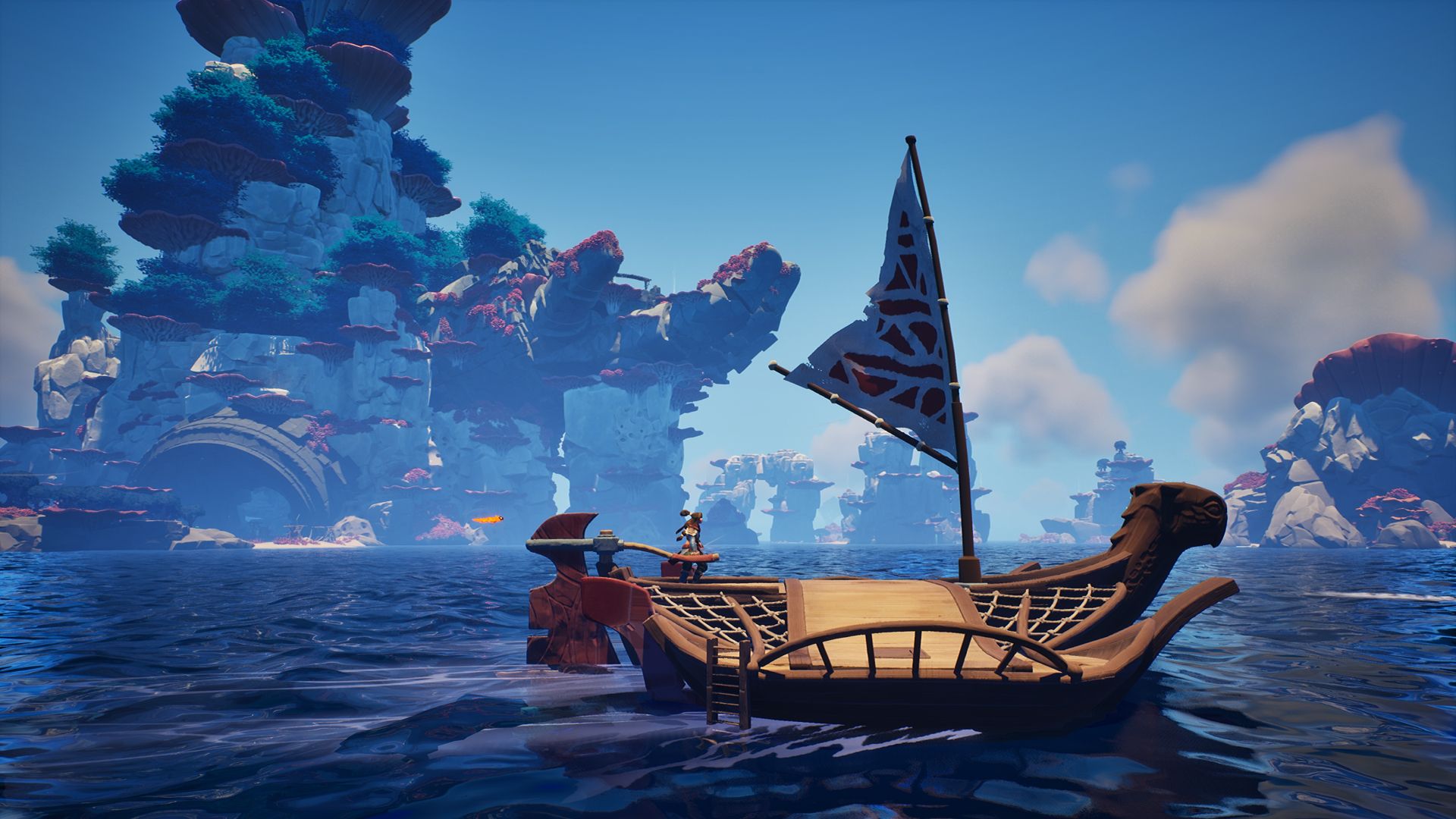
Game Rant: How did you handle the balance between narrative and open-ended sandbox gameplay?
It’s challenging for us to create a detailed story because we’re a very small team developing this survival crafting game. We had to prioritize what we could realistically achieve. We decided against a traditional narrative storyline, but we really focused on building a compelling world. We wanted to create a mysterious, beautiful, and slightly melancholic place, and then reveal its history to players through small clues and glimpses of events from long ago. I was just hearing about a friend’s experience with a game full of lengthy cutscenes, and it made me realize how much time and effort that would take – something our small team simply can’t afford.
We aimed for a specific atmosphere and emotional impact in the game’s world. For instance, players will immediately notice a massive hand and the stone remains of a long-dead giant, prompting questions about its history. We’ll gradually answer those questions through discovered journals and ancient monoliths, revealing the story of a lost civilization. This approach helped us create the intriguing and magical world we envisioned, while remaining achievable for our team size.

As a big fan of survival crafting games, I’m really curious what sets *Voyagers of Nera* apart from everything else out there right now. What does it do differently?
One of the best things about survival crafting games is how easily they adapt to different playstyles. You can enjoy them completely on your own, or easily team up with friends. Players can join and leave whenever they want, and everyone can contribute in their own way – one person might focus on building, while another hunts. It’s great because you can continue playing even when friends aren’t online, working on projects or crafting items for them to discover when they return. It’s a really fun way to help each other out and show you care.
We really wanted to emphasize teamwork and a sense of adventure. We want players to feel like they’re facing challenges together – preparing for a dangerous journey, exploring unknown territory, and tackling obstacles as a group. Our goal for game nights is to create a strong, unifying experience centered around this spirit of shared exploration, so everyone feels excited and ready to dive in together.
We’re aiming for a truly rewarding experience, so we’ve meticulously designed every part of the game world. While we could have created more content quickly using procedural generation, we prioritized the feeling of uncovering something special. We want players to feel that exploration is genuinely worthwhile, even after overcoming challenges – like retrying a section a couple of times – and being able to share those discoveries with others. We’re also focused on making the base building aspect feel like creating a unique and magical haven.
You’ll start by creating a simple base – basically a room to hold your belongings. But the idea is that it will quickly grow into something much more: a personalized and beautiful space that feels truly alive. We want you to experience the joy of building and expanding it with your friends, watching it evolve from a humble beginning into a thriving village. It’s about creating something together and having a shared sense of accomplishment – looking back and saying, ‘We built this!’
How Progression Works in Voyagers of Nera
Game Rant: What role does progression play in Voyagers of Nera?
The game features a couple of key ways to improve your character. From the moment you pick up your first item and throughout every battle and major story event, you’ll constantly earn experience and unlock new skills in a skill tree. This system is similar to what you might find in games like Palworld or Conan Exiles, but with a unique addition.
Throughout the game world, you’ll find vulnerable spirits in need of rescue. Some are concealed, while others are actively hunted by monsters and protected by magical energy. When you defeat the monsters and save a spirit, you gain unique magical powers and abilities that you can equip. These rescued spirits also unlock new crafting recipes and knowledge, providing a key way to progress. The first spirit you rescue serves as a tutorial, teaching you how to summon a ball of lightning to use against enemies.
The game features unique abilities you can find throughout the world. Some create updrafts for gliding, while others provide underwater oxygen refills. These abilities are tied to the environment and vary from place to place, playing a key role in how you progress. We have many plans to expand on this, including letting players upgrade their spirit companions in future updates.

Game Rant asked: How do you design a game that’s difficult enough to stay engaging, but also easy enough for new players to pick up and enjoy without feeling overwhelmed?
As a big fan of these kinds of games, I’ve been thinking about what makes them really work. Right now, survival crafting is super popular – it seems like everyone’s discovering how much fun it can be, and it’s great because you can play with any group of friends. But because so many people are getting into it, everyone expects more and more from the game. Some people love the challenge of constantly building and improving, while others just want to relax and enjoy the world. I think the key is finding a game that appeals to those dedicated fans who *really* love the core survival crafting experience – the ones who will keep the game alive and thriving.
We believe it’s important for players to feel a sense of accomplishment through effort and progression – earning new structures and reaching milestones should be rewarding. That’s a key part of what makes the game enjoyable. However, we also want the game to be accessible to everyone, so we’ve included server settings that let you customize the experience. You can adjust things like resource gathering speed and damage rates to suit your playstyle and schedule. If you only have a little time to play, you can speed things up and still make good progress. Ultimately, it’s about letting you tailor the game to have the most fun possible while exploring this new world.
Voyagers of Nera’s Art Style and Atmosphere Explained

Game Rant asked: Could you discuss how you developed the unique art style and atmosphere of *Voyagers of Nera*?
The survival crafting genre is becoming really packed – it seems like a new airship-based survival game is announced every couple of months. While it’s a crowded space, we’re glad the ocean setting hasn’t been explored as much, likely because it’s more challenging to develop. Exploration is key to these kinds of games, and we wanted to make it a standout feature in ours. We focused on creating a world that players would genuinely enjoy spending time in.
We aimed to create a game that felt instantly appealing – something you and your friends would want to jump into and play without hesitation. We were inspired by the idea of a beautiful ocean world that feels both inviting and mysterious, sparking curiosity about what lies beyond the surface and beneath the waves. This led us to draw inspiration from games and movies like Sea of Thieves, Moana, and The Wind Waker.
We aimed to build a world that feels both inviting and atmospheric, but it’s still a dangerous place. Players will encounter frightening creatures – colossal sea serpents and other monsters – that create intense, survival-focused challenges. While we want to deliver on the thrills expected in a crafting survival game, we also want players to feel a sense of beauty and wonder as they explore.
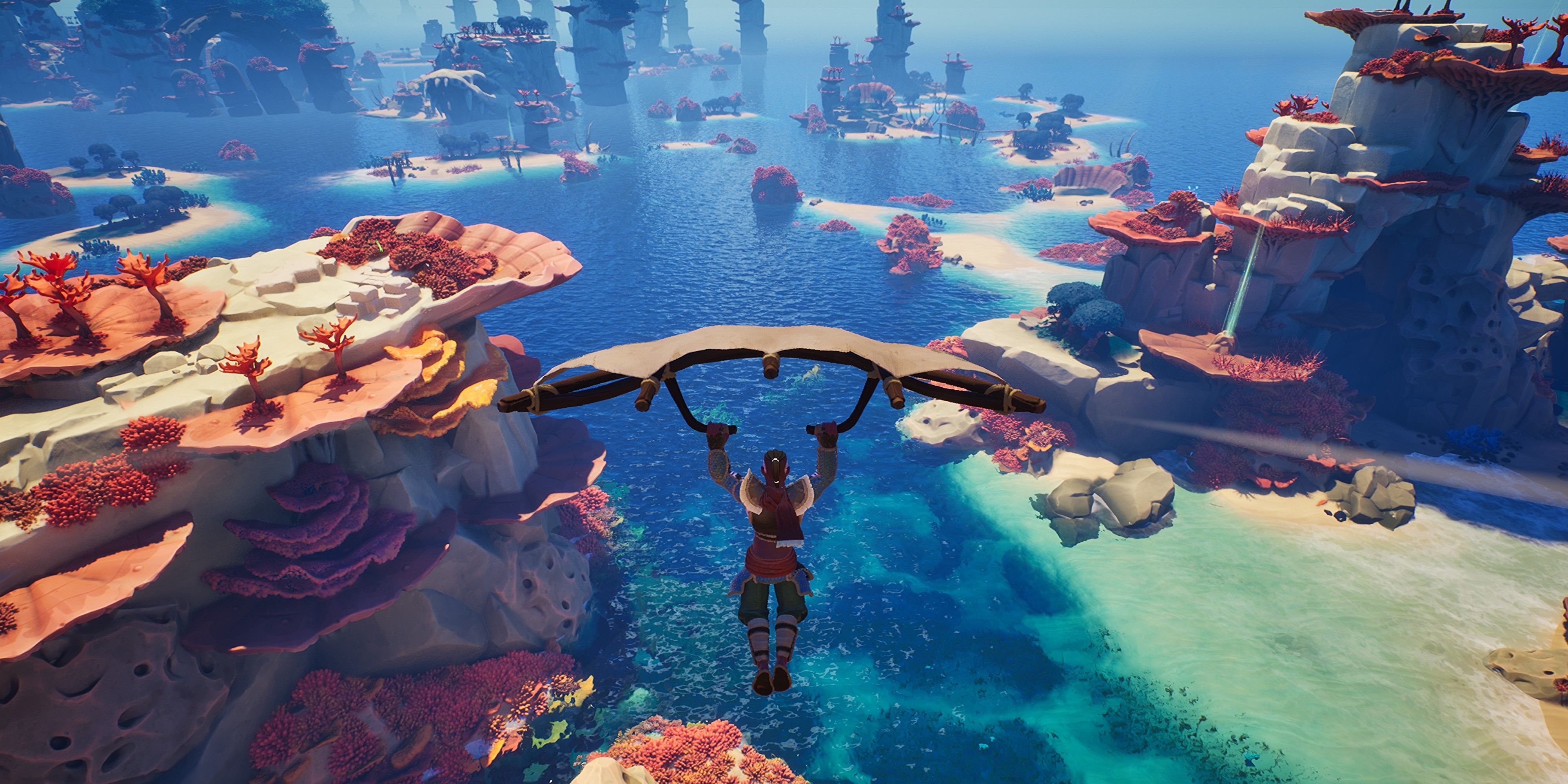
Game Rant asked if the ocean’s vastness ever risked making the game world feel too similar or repetitive.
Man, this game is really pushing my skills! We made a deliberate choice to build the world by hand, and honestly, it’s way harder than just letting a computer generate everything. It takes a special touch to make a smaller, more focused world feel truly interesting. You look at games like No Man’s Sky – they’re the masters of procedural generation, setting the bar for that kind of thing. But that’s not the path we want to take. I really believe we can create a world that *feels* diverse and unique, even if it’s not infinite in size. It’s a tough challenge, but I think it’s achievable.
Players generally want a clear goal and a way to achieve it, rather than just endlessly exploring without purpose. Making that work has been tough, because our game is different from most survival crafting games. We have both underwater and above-water areas, and getting around often involves sailing, surfing, or swimming. Designing a satisfying travel system around that was a major challenge. We spent a lot of time figuring out what feels good and why a player would choose one method of travel – like a boat or a skimmer – over another, even if simply swimming is possible. It’s important that all travel options are enjoyable, because just *being able* to do something doesn’t mean it’s fun.
Finding the right balance in the game was a major hurdle. We spent months repeatedly testing it with players outside the development team until we got it right. Early on, feedback showed we needed much more underwater content, so we focused on building that for the next two months. Player feedback has been incredibly valuable – it’s something we’ve really prioritized, and I’m so glad we did. It’s been challenging, but incredibly rewarding. We’ve been consistently testing with external players every two weeks since April 2024. Initially, it felt like a lot of work, and we questioned the decision. However, we received enthusiastic and detailed feedback from so many players, which allowed us to build strong relationships and have meaningful conversations about how to improve the game.
We really focused on getting detailed feedback from dedicated survival crafting fans. We wanted to hear comparisons – what they loved about our system versus what didn’t work, and how it stacked up against other games they’d played. Those kinds of conversations were incredibly valuable for our team. Gathering feedback from thousands of players over a year and a half completely changed how we approached development and opened up a ton of opportunities to make the game better.
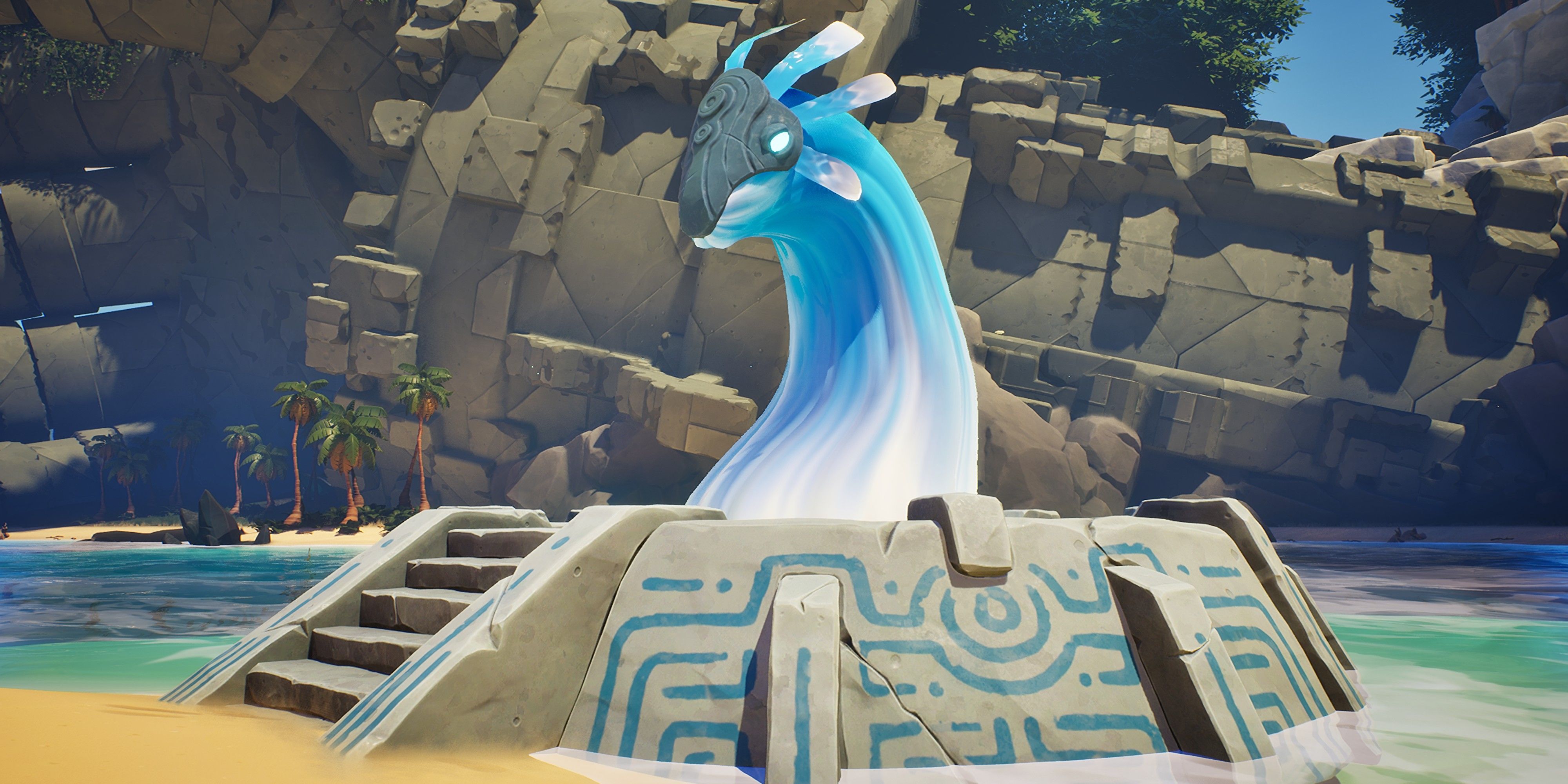
Game Rant asks if the developers of *Voyagers of Nera* have plans for future updates or expansions to continue adding to the game.
We designed the game to be very adaptable, and we’re releasing an early access version on September 16th. We believe survival crafting games thrive when players and developers have a close relationship, and we’re aiming for that. At launch, there will be three distinct environments to explore, offering around 30 to 40 hours of gameplay. That’s a solid start, but we have big plans to expand it! We’re aiming for at least five environments by the full release, and if players are still enjoying it, we’d love to continue adding even more areas to discover.
Each area in the game, called a biome, offers players a lot of new content, making each launch a great opportunity to return and explore. We want to build on this by consistently adding fresh experiences and letting players know when a new area is available to discover. Each biome is unique – our first, called The Embrace, features tropical islands built around the remains of a massive, ancient stone giant. The second, The Reef, is made up of huge towers of coral. The creatures there are like living, twisted coral that shoot poison, and players can use air geysers and gliders to explore the area vertically.
The third area players will explore is a massive mangrove forest. They’ll navigate through the tangled roots, and climb the trees to mine Amorite – a metal ore similar to Amber. We’re designing each area to feel very different from the others, and it’s a great way to introduce new creatures, items, and things to discover. Each area also represents a different element – water, wind, and now earth – hinting that a fire-themed area is coming soon!
Treehouse Games Will Continue to Focus on Collaborative Experiences
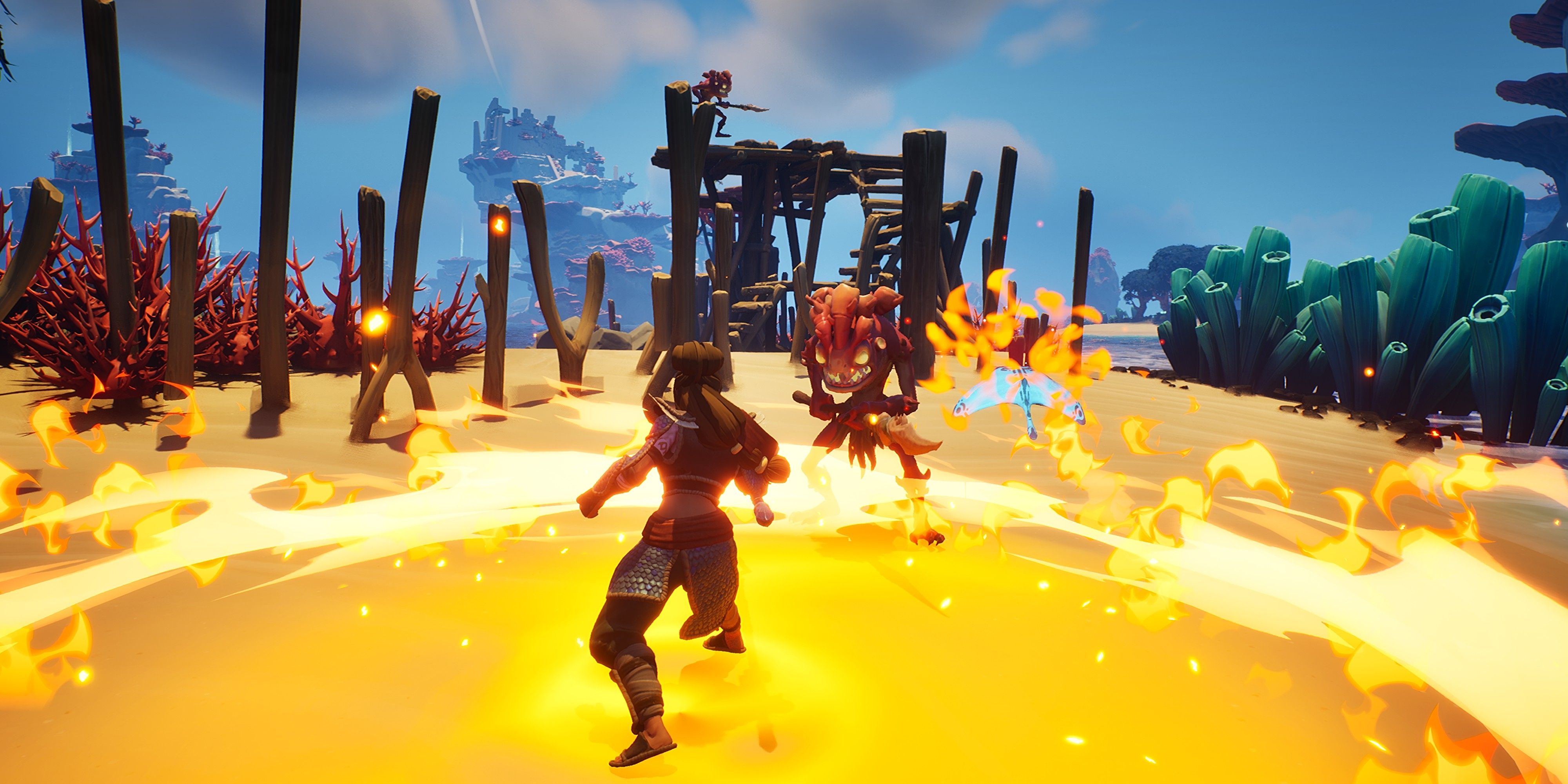
So, I’ve been thinking about what I picked up from my time at other game studios and how it’s shaped things at Treehouse Games. Honestly, I’ve learned a ton about what *doesn’t* work, and that’s been super valuable. I’m really trying to build a studio where we prioritize creative freedom and a healthy work-life balance – things I didn’t always see elsewhere. As for where we’re headed with games, we’re really focused on making unique, cozy experiences. Think games that are relaxing, charming, and a little bit different from what’s already out there. We want to create worlds people genuinely want to spend time in!
My co-founder and I started our company fully aware of how challenging startups and game development both are – and that combining the two would be even harder. We’ve been friends since college, where we first started working on projects together hoping to get into the industry, but our careers took different turns after that. I spent time at large companies, working on major, multiplayer games and live service titles. I was a product manager, handling things like how to make money from games, creating new characters, expanding existing brands, making changes to game systems, and even launching entirely new games, like Teamfight Tactics.
He’s a true independent game developer, starting his career as an environmental artist. This is actually his fourth game studio. I first met him in college when he was teaching himself technical art and already releasing games. Now, as both a designer and engineer, he recently became CEO of his latest studio, meaning he’s been more involved in every part of their game, ‘Voyagers,’ than anyone else on the team. We both realized how much we admire the qualities found in the other’s area of the industry. I’m particularly inspired by the boldness, resourcefulness, and willingness to adapt and genuinely listen to players that are common in independent game development.
He brought a more strategic approach, focusing on long-term vision and how every decision fit into that. That’s what ultimately led us to create Treehouse. Our team is a mix of people with experience from both large, established game studios and smaller independent ones, which hasn’t always been easy – everyone has different ideas about how things should be done. But it’s also a strength, because we’ve learned to value both careful planning and the willingness to experiment and iterate quickly. We recently received some feedback that surprised us, suggesting a significant change in direction. It feels like a big shift, but we’ve decided to go for it.
Looking ahead, we remain focused on creating amazing, collaborative experiences. That’s still our core mission. Our studio exists to foster shared adventures with friends – to build worlds where people can connect, spend quality time together, and truly immerse themselves. That’s the impact games had on us, and now we’re excited to share that with a new, global generation who are already using games for the same purpose. It’s incredibly rewarding to see.
We aim to build a small, efficient, and bold team that actively playtests and connects directly with our players. We believe our honesty and willingness to listen have been key to improving the game and fostering a strong community of passionate supporters who have significantly shaped its development.
We understand mistakes happen, and we value feedback to help us improve. We hope our community knows we genuinely care about what they think and that we’re actively listening. Building that trust has been challenging, especially with so much information competing for attention. We’ve developed a strong ability to connect with our players, and we want to maintain that open communication in all our future games. That’s the core of what Treehouse Games is all about.
[END]
Read More
- USD RUB PREDICTION
- Gold Rate Forecast
- How to Get Sentinel Firing Core in Arc Raiders
- Upload Labs: Beginner Tips & Tricks
- Silver Rate Forecast
- INJ PREDICTION. INJ cryptocurrency
- All Exploration Challenges & Rewards in Battlefield 6 Redsec
- Byler Confirmed? Mike and Will’s Relationship in Stranger Things Season 5
- All Voice Actors in Dispatch (Cast List)
- EUR INR PREDICTION
2025-09-18 13:13